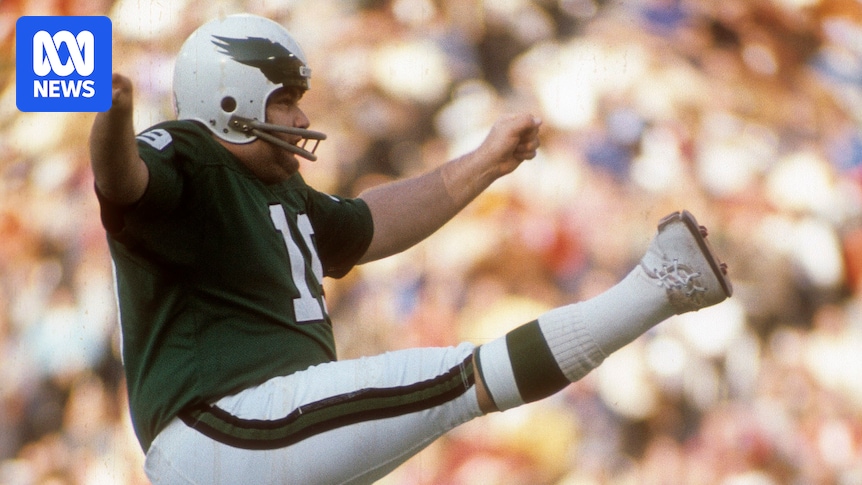
Even 55 years on, Tom Dempsey’s legendary kick remains one of those otherworldly, scarcely believable sporting moments. The New Orleans Saints were in turmoil, having just fired their coach after a disastrous start to the 1970 NFL season. Yet, against all odds, they managed to keep pace with the Detroit Lions in an early November clash that seemed like a David vs. Goliath battle.
With only seconds left on the clock, Dempsey, a generational talent as a kicker, had a shot at a miracle. Known as one of American football’s best, Dempsey was about to attempt a field goal from 63 yards, surpassing the league record of 56 yards at the time. Off a casual, barely three-step walk-up, his contact was true and straight. The ball soared, maintaining its height just long enough to sneak through and over the goalposts, leaving no one in the stadium quite able to believe what they had witnessed.
This one-in-a-million moment was made even more remarkable by the fact that Dempsey scored that goal with only half a kicking foot. Born without toes on his right foot and fingers on his right hand, Dempsey is one of just a handful of men with disabilities to have made a mark on elite mainstream sport.
The Few Men with Disabilities in Elite Sports
Dempsey’s story contrasts with elite women’s sports, where representation of disability and neurodivergence has become more commonplace in recent years. This runs parallel to several areas, including LGBTQIA+ participation, where men’s sports lag behind.
A decade before soccer player Carson Pickett became the first player with limb difference to represent the US women’s team, Spaniard Álex Sanchez was blazing his own trail in elite men’s soccer. In 2009, Sanchez became the first player with limb difference to play in La Liga, the top flight of Spanish football. Having retired from the professional game earlier in 2025, Sanchez identifies providing representation for children and footballers with disabilities as his most meaningful sporting achievement.
Sanchez’s Journey and Challenges
For large swathes of his early career, Sanchez’s relationship with his disability was fraught. “The only problem I had was tying my boots when I was a kid,” Sanchez told ABC Sport. “I actually didn’t realise I had a disability — the disability wasn’t important, I was a kid like the rest of them. The only thing important was to score the goals.”
As a teenager on the brink of his professional debut, Sanchez began to wonder how his impairment would be perceived by a football-mad Spanish public. When he was named in Real Zaragoza’s match-day squad for the first time, he was shocked by the media frenzy. Despite being a no-name 19-year-old debuting for one of the league’s smaller sides, Sanchez found himself on the front page of a Spanish sport newspaper with a daily readership in the millions. The accompanying image used a crude Spanish word for “people with a disability like mine.”
“I was like, ‘what the f*** is this?’,” Sanchez recalled. “It was crazy, it was not as sensitive as I wanted. As a 19-year-old boy, you are not ready to deal with some things.”
Dempsey’s ‘Sledgehammer’ Shoe and Controversy
After his record-breaking NFL kick, Dempsey experienced a similar alienation from his own narrative. Having had much success kicking barefoot as a college player, Dempsey commissioned a bespoke football boot upon entering the NFL in the late 1960s. The shoe, worth nearly US$2,000 in today’s money, was built to accommodate his unconventional foot and featured an almost 5-centimeter block of leather at its front.
It was while wearing this boot that Dempsey scored his career-defining three-pointer. Almost immediately, the fairness and legality of the instrument were called into question by opposition players and officials. Dallas Cowboys general manager and major NFL powerbroker Tex Schramm was a prominent critic, declaring that the toeless Dempsey had an “unfair advantage” and comparing his boot to a golf club with a “sledgehammer surface.”
“Unfair, eh? How ’bout you try kicking a 63-yard field goal to win it with two seconds left and you’re wearing a square shoe,” Dempsey was quoted as saying in response to speculation over the legality of his kick. “Oh yeah, and no toes either.”
Despite the controversy, no evidence was ever presented to support the claim that Dempsey had an unfair advantage. In fact, an ESPN Sport Science report claimed the specialty shoe actually hindered Dempsey’s kicking ability. Nonetheless, in 1977, the league implemented what became colloquially known as the “Tom Dempsey rule,” requiring players with an artificial limb to wear footwear conforming to standard boot dimensions.
The Importance of Role Models in Elite Sport
Away from the media spotlight, Sanchez’s early career saw him bounce between Spain’s top three divisions. During those years, one moment remained at the back of his mind. “The day before my debut, one kid with a disability like mine came to my hotel to say thank you — thank you for being an inspiration, thank you for playing in La Liga,” Sanchez said. “I couldn’t believe it at that point.”
As Sanchez’s career progressed, the lingering impact of that moment inspired his media re-emergence. “I knew I couldn’t be shy, I couldn’t stop speaking about disability, I had to do something — because there’re a lot of kids like him,” Sanchez said. “His mum came to the hotel as well. My mum didn’t have this kind of example when I was growing up — there was no example in Spain, there was no example in football.”
By the time Sanchez made the adventurous decision to move to Australia and sign for NPL NSW side Sydney Olympic, he was already an outspoken disability advocate. Sanchez was a huge success in the Harbour City, scoring 34 league goals in 44 games and leading Olympic to its first championship in three decades.
For Sanchez, in terms of lifestyle, accessibility, and disability, things off the pitch were just as good as his form on it, and his time in Australia is memorialized by a tattoo on his arm. “It was the best time of life, playing for Sydney Olympic,” Sanchez said. “There wasn’t a bad day in Australia.”
After a Spanish homecoming, a couple of years playing in India, and the completion of no less than four university degrees, Sanchez retired from professional football in early 2025 with no doubts about his crowning achievement. “It was the most positive point of my career, playing in La Liga with my disability,” Sanchez said.






